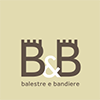APPARTAMENTI PER VACANZE
In affitto nel centro storico di Massa Marittima
PANORAMA
Dai due monolocali lo sguardo spazia dalle campagne fino il mare.
Normalmente è visibile l'Isola d'Elba e, in giornate particolari, anche la Corsica.
Il bilocale si affaccia sul corso principale del centro storico
che parte dalla Piazza del Duomo.
LA STRUTTURA
Gli appartamenti si trovano al terzo piano di un palazzo storico medievale, nel corso principale del centro storico di Massa Marittima.Ogni alloggio ha porta blindata, cucina propria con lavastoviglie, aria condizionata / riscaldamento, TV satellitare, Wi-Fi, biancheria e bagno.
CONTATTI
Balestre & Bandierevia della Libertà, 25 - Massa Marittima (GR)
+39 340 0640192
info@balestreebandiere.it


















